
International Journal of Disaster Risk Science
Scope & Guideline
Advancing global resilience through disaster risk science.
Introduction
Aims and Scopes
- Disaster Risk Reduction (DRR):
The journal emphasizes research on strategies and frameworks for reducing disaster risks, including the assessment and management of hazards, vulnerabilities, and capacities in communities. - Climate Change Adaptation:
There is a strong focus on the intersection of climate change and disaster risk, exploring adaptation strategies that enhance resilience to climate-related hazards. - Socioeconomic Impacts of Disasters:
The journal often investigates the socioeconomic dimensions of disasters, including the effects on marginalized communities and the role of social capital in recovery. - Technological Innovations in Disaster Management:
Research on the application of advanced technologies, such as AI and remote sensing, for disaster prediction, response, and recovery is a significant area of interest. - Public Health and Disasters:
The journal addresses the implications of disasters on public health systems, highlighting the importance of preparedness and response in healthcare settings. - Community Engagement and Participatory Approaches:
There is a consistent emphasis on the role of community involvement in disaster risk governance and the importance of local knowledge in disaster management strategies.
Trending and Emerging
- Artificial Intelligence and Machine Learning Applications:
The integration of AI and machine learning into disaster risk assessment and management is rapidly growing, showcasing the potential for enhanced predictive capabilities and decision-making. - Mental Health and Well-Being in Disasters:
There is an increasing focus on the psychological impacts of disasters, particularly concerning vulnerable populations such as older adults, highlighting the importance of mental health in disaster response. - Resilience Building in Urban Settings:
Research on urban resilience is gaining prominence, with studies examining how cities can adapt to increasing disaster risks through innovative infrastructure and governance. - Social Equity and Justice in Disaster Management:
An emerging theme is the examination of social equity in disaster risk management, focusing on how marginalized groups are affected and how to ensure equitable recovery processes. - Health Security and Disasters:
The interrelation between health security and disaster preparedness is increasingly recognized, especially in light of global health crises like the COVID-19 pandemic, prompting research on integrated health risk management.
Declining or Waning
- Traditional Hazard Assessment Methods:
There appears to be a decreasing emphasis on conventional hazard assessment methods, as more innovative and data-driven approaches gain prominence. - Single-Hazard Studies:
Research focusing solely on individual hazards is becoming less common, with a trend towards multi-hazard assessments that consider interconnected risks. - General Disaster Recovery Models:
Broad, generalized models of disaster recovery are being overshadowed by more context-specific and nuanced approaches that take into account local conditions and needs. - Historical Disaster Data Analysis:
The focus on historical data analysis for disaster risk assessment is waning, as researchers increasingly seek real-time data and predictive modeling techniques. - Quantitative Risk Assessment Techniques:
There is a decline in the exclusive use of quantitative methods for risk assessment, with a growing recognition of the need for qualitative insights and participatory approaches.
Similar Journals
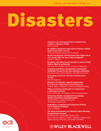
DISASTERS
Connecting Earth and Social Sciences for effective disaster response.DISASTERS, published by WILEY, is a premier academic journal dedicated to advancing the understanding of disasters across multiple disciplines, including Earth and Planetary Sciences and Social Sciences. With a historical publication span from 1977 to 2024, this journal has established itself as a vital resource within the academic community, boasting a Q1 category ranking in both fields, indicating its high impact and relevance. DISASTERS ranks impressively in Scopus, holding the #27 position in General Social Sciences and #36 in General Earth and Planetary Sciences, reflecting its influence in shaping disaster research and policy. The journal serves as a platform for interdisciplinary collaboration, offering researchers, professionals, and students critical insights into disaster management, response strategies, and risk reduction measures. Although it is not an Open Access journal, DISASTERS remains a cornerstone for those looking to contribute to and stay informed about the evolving landscape of disaster studies.
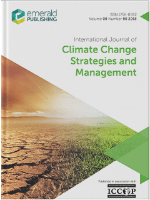
International Journal of Climate Change Strategies and Management
Pioneering management practices for a greener tomorrow.Introducing the International Journal of Climate Change Strategies and Management, a premier publication dedicated to advancing the understanding and development of innovative strategies addressing climate change. Published by Emerald Group Publishing Ltd in the United Kingdom, this journal has established itself as a trusted source within the realms of development, geography, and environmental science. With an impressive 2023 impact factor reflecting its high citation rates and a Q1 classification in pivotal categories such as Development and Geography, the journal stands at the forefront of climate change discourse. Since adopting an Open Access model in 2018, it has broadened its reach, making cutting-edge research accessible to a global audience. The journal encompasses a wide array of topics essential for academics and practitioners alike, focusing on management, policy-making, and methods for effective monitoring of environmental strategies. By fostering interdisciplinary dialogue, the International Journal of Climate Change Strategies and Management is essential for those aiming to contribute to sustainable solutions in our rapidly changing world.

Jamba-Journal of Disaster Risk Studies
Innovative Research for Effective Risk Management.Jamba-Journal of Disaster Risk Studies, published by AOSIS, serves as a vital resource in the fields of management, monitoring, policy, law, and safety research, with an ISSN of 1996-1421 and an E-ISSN of 2072-845X. Since its establishment as an Open Access journal in 2006, Jamba has dedicated itself to disseminating high-quality research that informs and enhances disaster risk management practices, particularly within the South African context and beyond. With a robust Impact Factor and acknowledgement in the Q2 and Q3 quartiles across critical categories in 2023, Jamba ranks favorably in Scopus, notably Rank #50/109 in Social Sciences (Safety Research) and Rank #218/399 in Environmental Science (Management, Monitoring, Policy and Law). The journal's convergence over the years—from 2013 to 2024—signals its commitment to adapting contemporary challenges in disaster risk studies. Scholars and practitioners are encouraged to explore Jamba as a go-to platform for innovative insights and collaborative discussions that impact policy-making and practical applications in disaster risk reduction.
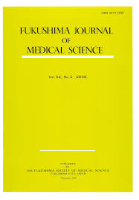
Fukushima Journal of Medical Science
Unveiling the Future of Medical ScienceFukushima Journal of Medical Science is a respected academic platform published by the Fukushima Society of Medical Science, focusing on a diverse array of topics within the field of medicine. With its roots tracing back to 1964, the journal has established a rich tradition of contributing to medical knowledge and remains a vital resource for researchers and professionals alike. Based in Japan, the journal holds a Q3 category ranking in Medicine (miscellaneous) as of 2023, showcasing its ongoing relevance and impact in the academic community. Although it currently does not offer open access options, its comprehensive content is accessible through institutional subscriptions. The journal's diverse rankings across multiple Scopus categories highlight its multidisciplinary approach, especially in areas such as Social Sciences and Phamaceutical Science, ensuring that it caters to a broad audience from various fields. The Fukushima Journal of Medical Science serves as an essential conduit for innovative research, collaboration, and professional development within its esteemed community, making it an invaluable asset for anyone invested in advancing the medical sciences.
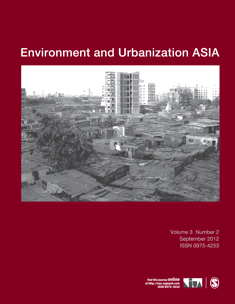
Environment and Urbanization ASIA
Exploring the Nexus of Urbanization and Environment in AsiaEnvironment and Urbanization ASIA is a leading academic journal published by SAGE Publications Ltd, focusing on the interplay between urbanization and environmental change across Asia. With an ISSN of 0975-4253 and E-ISSN 0976-3546, this peer-reviewed journal has established itself as an essential resource for scholars and practitioners alike, contributing significantly to the field of urban studies. Ranked in the Q1 category for Urban Studies in 2023 and positioned at 93rd out of 279 in Scopus, it reflects a robust percentile ranking of 66%, underscoring its impact and relevance. Published on a biannual basis, Environment and Urbanization ASIA aims to foster interdisciplinary dialogue and disseminate cutting-edge research that explores the complex dynamics of urbanization, sustainability, and environmental governance. Though it currently does not offer open-access options, its wealth of scholarly articles offers invaluable insights, making it a cornerstone for anyone engaged in addressing the challenges facing rapidly urbanizing regions in Asia. Join the community of researchers, professionals, and students dedicated to exploring innovative solutions in this critical area of study.

NATURAL HAZARDS
Transforming understanding into action for a safer world.NATURAL HAZARDS is a premier academic journal published by SPRINGER that focuses on the multidimensional aspects of natural hazards, their impacts, and mitigation strategies. With a robust impact factor and esteemed rankings in reputable databases such as Scopus, this journal is classified in the Q2 category in Atmospheric Science and Q1 in both Earth and Planetary Sciences (miscellaneous) and Water Science and Technology, showcasing its influence in these critical fields. Established in 1988 and continuing through 2024, it serves as a vital resource for researchers, professionals, and students alike, providing cutting-edge research and insights into the dynamics of natural hazards. Although it does not offer open-access options, the journal is accessible through institutional subscriptions, ensuring that high-quality research is disseminated efficiently to those dedicated to advancing our understanding of environmental challenges. By publishing empirical studies, theoretical analyses, and case studies, NATURAL HAZARDS plays a crucial role in informing disaster management policies and strategies, thereby contributing to a safer, more resilient world.
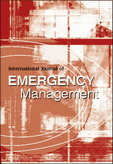
International Journal of Emergency Management
Empowering research to enhance emergency management practices worldwide.International Journal of Emergency Management is a reputable publication within the fields of emergency medicine and strategic management, published by InderScience Enterprises Ltd. With its ISSN 1471-4825 and E-ISSN 1741-5071, this journal has been a crucial platform for scholarly research since its inception in 2003. The journal aims to disseminate high-quality, peer-reviewed articles that address critical issues related to emergency management, including but not limited to disaster preparedness, response strategies, recovery methods, and risk assessment. Despite being categorized in Q4 of both emergency medicine and strategy and management in 2023, the journal serves as an essential resource for researchers, professionals, and students looking to further explore the evolving dynamics of emergency management. It leverages its global presence, with its headquarters located in the United Kingdom, thus attracting a diverse array of contributions addressing international and interdisciplinary perspectives. The journal fosters an environment where innovative ideas can flourish, ultimately contributing towards enhancing global emergency management practices.

Progress in Disaster Science
Advancing the Frontiers of Disaster ResearchProgress in Disaster Science, published by ELSEVIER, is a prestigious open-access journal that has been advancing the field of disaster research since its inception in 2019. With an ISSN of 2590-0617, the journal has quickly established itself as a leading resource, recognized for its impact across various related disciplines, as evidenced by its impressive Q1 rankings in 2023 in categories such as Earth and Planetary Sciences, Environmental Science, Geography, Planning and Development, and Safety Research. This journal publishes cutting-edge research that aims to enhance understanding and management of disaster risks, resilience, and recovery processes. Additionally, the journal's accessibility ensures that important findings are disseminated widely, fostering collaboration among researchers, professionals, and students globally. Positioned under the umbrella of critical environmental and safety insights, Progress in Disaster Science plays a pivotal role in shaping the discourse surrounding disaster management and preparedness in today's rapidly changing world.

Cuadernos de Investigacion Geografica
Pioneering Open Access in Geography and Earth SciencesCuadernos de Investigacion Geografica, published by UNIV RIOJA, SERV PUBLICACIONES, stands as a premier open-access journal dedicated to advancing knowledge in the fields of geography, environmental science, and earth sciences. Since its inception in 1983, this journal has fostered innovative research and critical discourse, currently holding a distinguished position in Scopus with impressive quartile rankings, including Q2 in both Earth and Planetary Sciences, and Geography, Planning and Development, reflecting its impact and relevance. With an aim to present high-quality, peer-reviewed articles that contribute to the understanding of our planet and its systems, Cuadernos de Investigacion Geografica welcomes submissions from researchers, professionals, and students alike, fostering a collaborative environment that spans across diverse geographical contexts. Operating from its hub in Logroño, Spain, this journal continues to be a vital resource for anyone engaged in geographical research and environmental analysis, providing open access to enhance knowledge sharing and innovation in these dynamic fields.

JOURNAL OF RISK RESEARCH
Navigating the Landscape of Risk Across Diverse FieldsJOURNAL OF RISK RESEARCH, published by Routledge Journals, Taylor & Francis Ltd, is a prestigious academic journal dedicated to advancing the understanding of risk across diverse fields, including engineering, safety, social sciences, and management. With its impact reflected in its Q1 quartile rankings in multiple categories and a solid standing in Scopus rankings, this journal serves as an essential resource for researchers, professionals, and students aiming to explore the complexities of risk analysis and its implications in real-world scenarios. The journal has been consistently publishing high-quality research since 1998, contributing to both theoretical frameworks and practical applications. While not open access, the content of the journal is invaluable for those keen on staying at the forefront of risk research. By addressing the multifaceted nature of risk, including safety, reliability, and strategic management, the JOURNAL OF RISK RESEARCH plays a vital role in shaping contemporary discussions and innovations in risk management and decision-making.